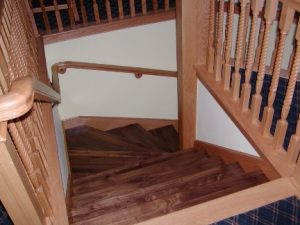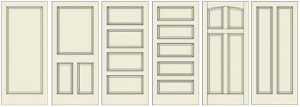02 Sep Summer 2010
Willis Sinclair Homes
“The Lowcountry’s Premier Custom Home Builder”
Personalized Full-Service Construction
Fixed Price and Cost Plus Contracts

24 Gabriel Road
Lodge, South Carolina 29082
843 846 2500

Summer 2010
Hurricane Season is upon us
Don’t take hurricanes lightly. People and animals get killed in them every year in addition to millions of dollars of property being destroyed. Over 1,000 people died in hurricanes in 2008.
For tips on dealing with hurricanes, visit NOAA’s site: www.nhc.noaa.gov/HAW2/english/intro.shtml
The National Hurricane Center is using a newly modified Saffir-Simpson scale this year to gauge hurricane strength. It is partially reproduced here. Be sure to look at their site:
www.nhc.noaa.gov/sshws_table.shtml?large
|
Cat |
Wind (mph) |
Summary |
|---|---|---|
|
1 |
74 to 95 |
Very dangerous winds will produce some damage. Large branches of trees will snap and shallow rooted trees can be toppled |
|
2 |
96 to 110 |
Extremely dangerous winds will cause extensive damage. Many shallowly rooted trees will be snapped or uprooted and block numerous roads. |
|
3 |
111 to 130 |
Devastating damage will occur. Many trees will be snapped or uprooted, blocking numerous roads. |
|
4 |
131 to 155 |
Catastrophic damage will occur. Most trees will be snapped or uprooted. |
|
5 |
Over 155 |
Catastrophic damage will occur. Nearly all trees will be snapped or uprooted. |

From the desk
of Willis Ponds …
It has been a hot and very busy Summer for us so far. That is why our newsletter is late. With Bill Burdick’s trip out West and the extra work that we have picked up we have been really busy. While there haven’t been many calls for new homes recently it seems that owner’s of existing homes are taking advantage of the slow times and available labor to have renovations and remodeling done. We are certainly grateful to our clients who have kept us working even through the lean times.
Some people have estimated there are about 10,000 decisions necessary when a person builds a house. One important decisions is your choice of interior doors. This month, we discuss a few of the facts you will need to decide which doors are best for you. Your choice of interior doors makes a big difference in the look and feel of your home. This is very important to us because at Willis Sinclair Homes, we do our very best to make sure our home owners are happy with the finished product.
Hurricane season is upon us again. Be sure to have emergency supplies and a survival plan on hand. Also be sure you have what you need to protect your house. If you need pointers on home hurricane protection, call us. We can help.
Willis
President, Willis Sinclair, Inc.
843 846 2500
Interior doors
At first glance, interior door selection should be simple. However, it can quickly become rather complex.
The purpose of a door is to block sound or or sight or both. A doorway sometimes is used to mark a room division.
There are many different types of doors. The simplest is simply a cased opening. Technically, this is not a door at all, but we will include it since many homes have cased openings. Clearly, they can be built any size desired. The tops can be arched, but arching them adds considerably to the complexity and cost.

Swing doors
Next to a simple cased opening in simplicity is a single hinged door. Doors can be hinged either on the right or left side. Typically, doors open in one direction. To determine which hinge side a door is, imagine you are standing with your back to the hinges on the door jamb. If the door opens to your left, it is a left hand (LH) door. If it opens to the right, the door is a right hand (RH) door.
![]()
Pocket door
Next in popularity to a single door is a pocket door. Pocket doors do not require any wall space when they are open, however, they do require thick (6”) walls in order to function best. Pocket doors are more difficult to install and require moderately priced tracks ($150 for good quality) to carry them. Labor to install a pocket door is typically about three times what it is for a normal swinging door.
Sometimes closets, pantries and other small rooms have two narrow hinged doors. This arrangement looks similar to a narrow set of double doors. They are called bi-hinge doors. On rare occasions, bi-hinge doors are used where there is not room for a full sized door to open.
![]()
Double or bi-hinge doors
Double doors are two hinged doors similar to bi-hinge doors. Double doors have a vertical board which makes it impossible to see between the doors. This piece is called an astragal. Often double doors are used for formal entrances to rooms. Typically one door must open first before the other. In this arrangement one door is usually referred to as ‘active’ and the other as ‘inactive’..
Sliding doors work like barn doors and are sometimes used as interior doors. They don’t close tightly, so will not block sound or sight completely. The hardware shows above the door, so the look is very casual.
![]()
Single & double folding doors
Bi-fold doors are typically used on closets. They consist of two (usually louvered) hinged doors. Often closets have double bi-fold doors.
![]()
By pass doors
Bypass doors are also used on closets where one door slides past the second door. These doors take up no wall space, but you cannot open both doors at the same time, so access is somewhat limited.
Transoms (short windows above doors) can be used over doors to make the door appear taller. Originally, transoms were used to allow light and air to enter the room with the door closed. Today’s transoms usually are fixed so they allow light, but not air to enter. With air conditioning, air-flow is not so important.
Basically, there are two main parts of a door: the core and the skins. Inexpensive doors have hollow, honeycomb or foam cores. These doors are light-weight, aren’t very durable and do not block sound very well.
Some doors have solid wood fiber (such as MDF) cores. These doors are much heavier than hollow doors and thus block sounds well. Typically MDF core doors are stable and don’t warp or twist over time. However, they can be a challenge to hang properly because of their weight.
Some doors have solid wood cores with wood veneer surfaces. Originally, all doors were solid wood but now you can only have a real solid wood door if you have it custom made. This is due to the tendency for solid wood doors, particularly 8’ tall doors, to warp or twist. Now, with its laminated construction, a solid wood door is much more stable than it used to be.
One downside of solid wood doors is shrinkage. The panels of a panel door are loose so they will expand and contract as necessary. Sometimes the door finish (paint or polyurethane) will glue the panel in place. If the panel does shrink, it may split. If you see panel doors with cracks in the panel, this is likely what happened. If the panels don’t stick to the styles (vertical side boards), when they shrink, then often a small strip of bare wood will be exposed.
Door skins (the visible sides of a door) can be vinyl, hard board (Masonite) or wood veneer. Solid wood doors of course don’t have skins. The wood is the skin. Some higher quality solid wood core doors have a thick veneer of expensive wood, such as mahogany, which shows and less expensive wooden cores.

A few of scores of panel patterns available for interior doors
Panel doors are available in scores of patterns. The panels can be flat or raised. The moulding around each panel can be a number of different profiles. Both wooden doors and MDF doors are available in many different panel patterns.
Louvered doors are sometimes used where ventilation is desired with the door closed such as a closet or laundry room.
Interior doors come in many sizes. Typically they are either 6’ 8”, 7’ 0” or 8’ 0” tall. Usually rooms with ceilings over 8′ tall have the taller doors. Widths typically start at 12” and go to 36”. Typical thickness is 1⅜” or 1¾”. Custom sizes can be made in any dimension you like.
Clearly, the heavier the door, the more substantial the hardware must be. Often taller and heavier doors will have four hinges to ensure they work smoothly. The hinge shapes (rounded or square corners) and size also varies. Many finishes (brass, antique brass, oil rubbed bronze, nickel, etc.) are available.
Door knobs come in many types also. Privacy knobs have a way to ‘lock’ the door. Typically these are used for bedrooms or other rooms where access is to be limited. A passage knob does not have a locking mechanism. A dummy knob is one that is simply a handle. It does not turn and it is usually on one side of the door.
Your selection of interior doors and door hardware make a big difference in the ‘feel’ of your home. Make your selections carefully. If you need help, call us. We can help.
Willis Sinclair Homes, where ‘Built Right’ is the only ‘good enough’ we understand.
Call 843 846 2500






No Comments